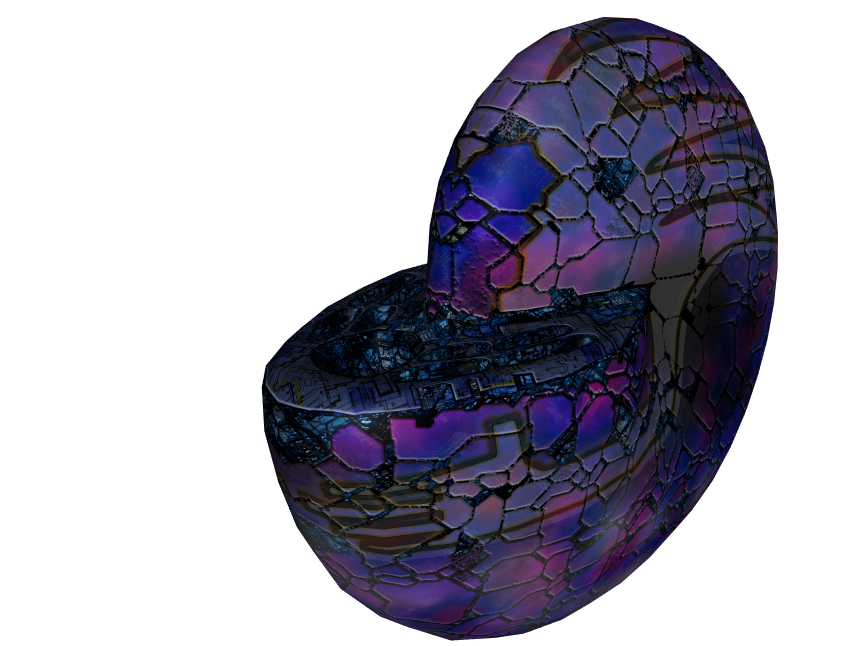Stunning. Absolutely gorgeous.
As for shield/radiator fins, yes, it should have some, but this brings me to something pertinent to all models of very large objects - they should, whenever possible, be built out of smaller pieces.
Firstly, for reasons including (but not limited to) texture size sanity (and pixel granularity) massive objects should (at the least) be composed of multiple mesh/texture chunks, even if they are to still be a single game object (see: Clydesdale model, which is composed of three separate meshes). Additionally, for REALLY BIG models, dividing things into separate meshes also buys meaningful gains in LOD responsiveness (i.e. only the part of the massive object which is actually taking up your field of view need be displayed at top level detail). The clearest case for this sort of thing is radially symmetric models (which may primarily apply to stations, but... stations can be among the most large of the very large models

)
Secondly (and this applies to the radiator fins it would be nice to see) if some part of a model is to be repeated, perhaps even across models, or is clearly a subsidiary part (e.g. external cargo container on a freighter), it may be preferable to construct said part as a unit rather than just a separate mesh, so that they can be independently acted upon, instantiated, and reused. For the truly adventurous (as the interface for specifying subunits isn't entirely user friendly), this can lead to library-component based design of ships and stations (not at all a bad thing when it comes to aesthetic consistency within a manufacturing group), easy-to-construct variant models (add/remove parts) or, the perhaps less useful, but very gratifying, ability to blow up smaller parts off of larger objects (for full effect, one could even pre-damage the parts of the texture map normally obscured by the sub-units). But, on this second point, I digress too much into wistful fancy -- the key point is really the first point.
Even at a texture size of 2Kx2K pixels, if you have (for example) a 4 Kilometer wide cube, that's 96 (= 4*4*6) square kilometers to cover with that texture. Making simplistic assumptions about the coordinate mapping, one ends up with a single pixel being 22 square meters (4000*4000*6/(2048*2048). This example is clearly contrived, but the point remains that using a single texture/mesh to represent truly massive objects has limitations, and that there are ways to circumvent these limitations which may actually bring additional benefits.









